This article was co-authored by Kevin Stone, MD. Dr. Kevin Stone is an orthopaedic surgeon and the founder of The Stone Clinic, a leading orthopaedic surgery, sports medicine, and rehabilitation clinic in the San Francisco Bay Area. With over 30 years of experience, Dr. Stone specializes in knee, shoulder, and ankle repair, using biologic reconstruction and joint replacement. He holds a BS in Biology from Harvard University and a Doctor of Medicine (MD) from the University of North Carolina at Chapel Hill. Dr. Stone completed his residency in Internal Medicine and Orthopaedic Surgery at Harvard University and in General Surgery at Stanford University. He then completed a fellowship in Orthopaedic Research and Surgery at the Hospital for Special Surgery and Tahoe Orthopaedics. He lectures around the world as an expert in cartilage and meniscal growth, replacement, and repair and holds over 40 U.S. patents on novel inventions to improve healthcare. Dr. Stone is a physician for Smuin Ballet and has served as a physician for the U.S. Ski Team, the U.S. Pro Ski Tour, the United States Olympic Training Center, and World Pro Ski Tour.
There are 17 references cited in this article, which can be found at the bottom of the page.
This article has been viewed 30,489 times.
Hypermobility syndrome, or double-jointedness, is characterized by the ability to move joints past the normal range of motion. This can sometimes result in painful joints, and those with this condition might be more prone to dislocations. Though this condition is not curable, those who suffer from it can still lead a normal life.[1]
Steps
Preventing Joint Pain
-
1Avoid overextending your joints. When you have hypermobility syndrome, it means you can move your joints past the normal range.[2] Avoid doing this on purpose to show off for friends or as a party trick.[3]
- If you often overextend your joints, you may develop arthritis over time. Arthritis is a disorder in the joints that causes severe inflammation and pain. To avoid developing this, make sure you aren’t pushing your joints past their normal range of motion too often, or on purpose.
- Overextending your joints could cause you to dislocate them. Dislocating your joints is painful and can damage the cartilage between your joints. It is common for people with hypermobility to dislocate or partially dislocate joints. This often due to minor trauma or, less often, some people dislocate their joints by minor self-manipulation. If you dislocate a joint, seek medical attention to reset it.[4]
-
2Consider using braces or orthotics when exercising. These precautions may help protect your joints when you are going to be using them or causing them stress.[5] If you have a joint that is particularly sensitive or loose, sometimes taping or wrapping it can help stabilize the joint.[6]
- Many stores sell braces made for specific parts of the body. Your doctor might be able to recommend a specific brace or wrap. Make sure you use the brace or wrap properly to avoid injury.
- Even when using a brace or orthotic, you will want to make sure you listen to your body. If you feel pain in your joints while exercising, take a break and give your joints a chance to recover before continuing.
- Strengthening is still the best way to stabilize any joint.[7]
Advertisement -
3Pay attention to your posture. Avoid putting your body into positions in which it might put undue stress on your joints.[8] For example, try not to sit with your legs crossed. Keep your hips and knees at a 90-degree angle when seated.
- When walking, keep your shoulders back and head up. Keeping your spine aligned will prevent any undue stress on your hips or shoulders. Bad posture can stress the nerves in your spine and put pressure on discs and muscles.[9]
- Practice good posture by rolling your shoulders back and pulling your elbows toward your back. This pushes your scapula into your ribs and pulls your spine into alignment.[10]
- Make sure your workstation is ergonomically sound, meaning it is set up in a way that will not cause stress on your body.
-
4Wear shoes that support your arch. Many people with joint hypermobility have a condition called flat foot, which means they lack the common arch in their foot. This can negatively affect the pressure on your joints, as well as your posture. Wearing shoes with support can help correct this.[11]
- Choose a shoe that has a firm arch support. If you can press down on the arch support of the shoe and it collapses in, it will not offer you the support you need. Pick a shoe that press-up into the arch of your foot firmly to support it.[12]
- You can also purchase inserts to wear with shoes you already own. The same principle applies: make sure you choose an orthotic insert that will support your arch and keep the bones of your feet aligned.
Treating Symptoms
-
1Take anti-inflammatory medication. Many over-the-counter options exist that you can pick up at your local drug store. If you have joint pain from your hypermobility, taking the recommended dosage of one of these drugs can help ease the pain. However, people with hypermobility are known to have a resistance to pain medication and even anesthesia, which means the medication may have little effect.[13]
- Non-steroidal anti-inflammatory drugs (NSAIDs) like ibuprofen are great options for relieving joint pain. They work in the body by reducing inflammation. If the recommended over-the-counter dosage doesn’t seem to be working, a doctor might be able to prescribe you a higher dose available through prescription.
- Acetaminophen is another option for pain relief. Never take more than 3 grams of Tylenol or acetaminophen a day due to the risk of liver damage.[14]
-
2Elevate an injured or painful joint. You can treat these types of injuries the same way you might treat a sprain. Use some pillows to prop up your injured or sore joint. This will reduce swelling by permitting drainage of the area.[15]
- In addition to elevation, you will want to rest the joint. Avoid putting stress on it for 24 – 48 hours.
- If your joint hurts for more than 48 hours, see a doctor.
-
3Apply heat and ice to the sore joint. Try a hot water bottle or heating pad on a low or medium heat setting against the sore joint. Adjust the heat to your comfort level, and leave it on for 15 – 20 minutes at a time. This can soothe pain in the joint.[16]
- Alternatively, you can use cold therapy to treat a painful joint. Apply a cold compress, ice pack, or bag of frozen vegetables to the injured joint in 10-minute intervals. This can reduce swelling in the area and help relieve pain.[17] Whatever you use, make sure you wrap it in a towel or cloth to protect your skin.
- Alternating heat and ice increases then decreases blood flow to the area, providing a pumping effect that reduces swelling.[18]
-
4Seek medical advice. If you have severe pain, or if home remedies are not helping alleviate the existing pain, see your doctor. A doctor can provide further treatment and potentially diagnose any other issues that might be present.[19]
- Your doctor will likely want to know the nature of the pain: when it started, how long it has lasted, how bad it is, where it is centrally located, if it has gotten worse since it began, and if it has been accompanied by other symptoms such as visible swelling or any redness.
- Keep a journal to record symptoms and how you react to different treatments. This way you will know which treatment methods work the best for you.
Maintaining Healthy Joints
-
1Maintain healthy sleep habits. Sleeping is how the body restores and heals itself. By getting plenty of good sleep, you will give your body a chance to heal any injuries in your joints, and strengthen them over time.[20]
- Try to establish a set bedtime and waking time. If you stick to a specific schedule, your body will likely get more and better sleep. Eventually, you will adapt to the schedule and it will happen naturally.[21]
- Be aware of your sleeping positions, as well. Try to avoid lying down in positions that put any undue stress on your joints. This can cause you to wake up feeling sore or unrested. Make sure your neck is supported when you sleep, and try placing a pillow between your knees to support your hips and back. Avoid lying with all your weight on one arm, and stretch out your muscles thoroughly upon waking.
-
2Eat a healthy diet. In order to keep your weight under control and keep extra stress off of your joints, it’s important to eat a balanced, healthy diet. Make sure you incorporate plenty of fruits and vegetables, healthy oils, and whole grains into your everyday diet.[22]
- Plan snacks and meals ahead of time. Keep a calendar on the fridge and plan meals at the start of each week. This way, you will be less tempted to overeat or snack too much between meals. You will also be less likely to eat fast food if you have your meals already planned at home.
-
3Follow an exercise routine.[23] Exercise is an important component of any healthy lifestyle, but those who suffer from joint hypermobility will need to make sure they engage in exercise that is low-impact rather than high-impact.[24]
- Exercising will help you strengthen your muscles, which will reduce the pressure put on your joints when you move.[25]
- Swimming and biking are low-impact exercises that are both healthy and enjoyable. Find a local health center with a pool to swim regularly, or try to incorporate biking into your daily routine. Remember that you can use the pool for pool running and walking laps if swimming isn't your preferred activity[26]
- If you find that certain exercise irritates your joints more than others, stick to the ones that cause the least irritation.
- Ask a trainer to help you exercise around your sore spots so that you can continue to exercise every day no matter what part hurts.
-
4Stay hydrated. In addition to eating well and exercising, keeping your body hydrated is another important aspect of a healthy lifestyle. Dehydration is the cause of many health issues, and upping your daily water intake can help improve not just your joint health, but your overall health as well.[27]
- Most joint supplements (glucosamine and chondroitin sulfate) need proper hydration to work their best with your body chemistry. If you opt to take joint supplements of any kind, make sure you maintain sufficient hydration to aid in the effectiveness of these supplements.
-
5Try occupational or physiotherapy. Occupational therapy will help you relearn how to carry out every-day activities in a way that will cause less stress to your joints, which can help prevent and treat symptoms over time. A physiotherapist will help you manage pain and educate you on how to manage your condition.[28]
- When looking for an occupational or physiotherapist, your doctor might be able to give you a referral. Your doctor may also be able to recommend which type of therapy will be best for you and your needs.
- Ask your therapist questions when beginning therapy. Make sure you know if you will be seen one-on-one or in a group, whether there are any therapists on staff that specialize in your specific condition, and whether you will be seen by an actual licensed therapist or by a nurse or aide.
- Insist on one-on-one manual therapy for the full time of your visit.
- If you have private health insurance, make sure your therapist is in your network so your therapy will be covered.
Expert Q&A
Did you know you can get expert answers for this article?
Unlock expert answers by supporting wikiHow
-
QuestionIs it bad to have hypermobility?
 Kevin Stone, MDDr. Kevin Stone is an orthopaedic surgeon and the founder of The Stone Clinic, a leading orthopaedic surgery, sports medicine, and rehabilitation clinic in the San Francisco Bay Area. With over 30 years of experience, Dr. Stone specializes in knee, shoulder, and ankle repair, using biologic reconstruction and joint replacement. He holds a BS in Biology from Harvard University and a Doctor of Medicine (MD) from the University of North Carolina at Chapel Hill. Dr. Stone completed his residency in Internal Medicine and Orthopaedic Surgery at Harvard University and in General Surgery at Stanford University. He then completed a fellowship in Orthopaedic Research and Surgery at the Hospital for Special Surgery and Tahoe Orthopaedics. He lectures around the world as an expert in cartilage and meniscal growth, replacement, and repair and holds over 40 U.S. patents on novel inventions to improve healthcare. Dr. Stone is a physician for Smuin Ballet and has served as a physician for the U.S. Ski Team, the U.S. Pro Ski Tour, the United States Olympic Training Center, and World Pro Ski Tour.
Kevin Stone, MDDr. Kevin Stone is an orthopaedic surgeon and the founder of The Stone Clinic, a leading orthopaedic surgery, sports medicine, and rehabilitation clinic in the San Francisco Bay Area. With over 30 years of experience, Dr. Stone specializes in knee, shoulder, and ankle repair, using biologic reconstruction and joint replacement. He holds a BS in Biology from Harvard University and a Doctor of Medicine (MD) from the University of North Carolina at Chapel Hill. Dr. Stone completed his residency in Internal Medicine and Orthopaedic Surgery at Harvard University and in General Surgery at Stanford University. He then completed a fellowship in Orthopaedic Research and Surgery at the Hospital for Special Surgery and Tahoe Orthopaedics. He lectures around the world as an expert in cartilage and meniscal growth, replacement, and repair and holds over 40 U.S. patents on novel inventions to improve healthcare. Dr. Stone is a physician for Smuin Ballet and has served as a physician for the U.S. Ski Team, the U.S. Pro Ski Tour, the United States Olympic Training Center, and World Pro Ski Tour.
Board Certified Orthopaedic Surgeon
-
QuestionIs exercise good for hypermobility?
 Kevin Stone, MDDr. Kevin Stone is an orthopaedic surgeon and the founder of The Stone Clinic, a leading orthopaedic surgery, sports medicine, and rehabilitation clinic in the San Francisco Bay Area. With over 30 years of experience, Dr. Stone specializes in knee, shoulder, and ankle repair, using biologic reconstruction and joint replacement. He holds a BS in Biology from Harvard University and a Doctor of Medicine (MD) from the University of North Carolina at Chapel Hill. Dr. Stone completed his residency in Internal Medicine and Orthopaedic Surgery at Harvard University and in General Surgery at Stanford University. He then completed a fellowship in Orthopaedic Research and Surgery at the Hospital for Special Surgery and Tahoe Orthopaedics. He lectures around the world as an expert in cartilage and meniscal growth, replacement, and repair and holds over 40 U.S. patents on novel inventions to improve healthcare. Dr. Stone is a physician for Smuin Ballet and has served as a physician for the U.S. Ski Team, the U.S. Pro Ski Tour, the United States Olympic Training Center, and World Pro Ski Tour.
Kevin Stone, MDDr. Kevin Stone is an orthopaedic surgeon and the founder of The Stone Clinic, a leading orthopaedic surgery, sports medicine, and rehabilitation clinic in the San Francisco Bay Area. With over 30 years of experience, Dr. Stone specializes in knee, shoulder, and ankle repair, using biologic reconstruction and joint replacement. He holds a BS in Biology from Harvard University and a Doctor of Medicine (MD) from the University of North Carolina at Chapel Hill. Dr. Stone completed his residency in Internal Medicine and Orthopaedic Surgery at Harvard University and in General Surgery at Stanford University. He then completed a fellowship in Orthopaedic Research and Surgery at the Hospital for Special Surgery and Tahoe Orthopaedics. He lectures around the world as an expert in cartilage and meniscal growth, replacement, and repair and holds over 40 U.S. patents on novel inventions to improve healthcare. Dr. Stone is a physician for Smuin Ballet and has served as a physician for the U.S. Ski Team, the U.S. Pro Ski Tour, the United States Olympic Training Center, and World Pro Ski Tour.
Board Certified Orthopaedic Surgeon
References
- ↑ Kevin Stone, MD. Board Certified Orthopaedic Surgeon. Expert Interview. 19 November 2020.
- ↑ Kevin Stone, MD. Board Certified Orthopaedic Surgeon. Expert Interview. 19 November 2020.
- ↑ https://www.nhs.uk/conditions/joint-hypermobility-syndrome/
- ↑ https://www.nlm.nih.gov/medlineplus/ency/article/003295.htm
- ↑ https://my.clevelandclinic.org/health/diseases/21763-joint-hypermobility-syndrome
- ↑ Kevin Stone, MD. Board Certified Orthopaedic Surgeon. Expert Interview. 19 November 2020.
- ↑ Kevin Stone, MD. Board Certified Orthopaedic Surgeon. Expert Interview. 19 November 2020.
- ↑ Kevin Stone, MD. Board Certified Orthopaedic Surgeon. Expert Interview. 19 November 2020.
- ↑ https://www.health.harvard.edu/staying-healthy/perfecting-your-walking-technique
- ↑ https://medlineplus.gov/guidetogoodposture.html
- ↑ https://www.nhs.uk/conditions/joint-hypermobility-syndrome/
- ↑ http://www.nationwidechildrens.org/how-to-choose-orthotics
- ↑ https://www.versusarthritis.org/about-arthritis/conditions/joint-hypermobility/
- ↑ Kevin Stone, MD. Board Certified Orthopaedic Surgeon. Expert Interview. 19 November 2020.
- ↑ http://www.nhs.uk/Conditions/Sprains/Pages/Treatment.aspx
- ↑ https://my.clevelandclinic.org/health/symptoms/17752-joint-pain
- ↑ http://www.nhs.uk/Conditions/Sprains/Pages/Treatment.aspx
- ↑ Kevin Stone, MD. Board Certified Orthopaedic Surgeon. Expert Interview. 19 November 2020.
- ↑ https://medlineplus.gov/ency/article/003295.htm
- ↑ https://www.cdc.gov/sleep/about_sleep/sleep_hygiene.html
- ↑ http://healthysleep.med.harvard.edu/need-sleep/what-can-you-do/good-sleep-habits
- ↑ https://www.cdc.gov/healthyweight/healthy_eating/index.html
- ↑ Kevin Stone, MD. Board Certified Orthopaedic Surgeon. Expert Interview. 19 November 2020.
- ↑ https://www.versusarthritis.org/about-arthritis/conditions/joint-hypermobility/
- ↑ Kevin Stone, MD. Board Certified Orthopaedic Surgeon. Expert Interview. 19 November 2020.
- ↑ http://www.nhs.uk/Conditions/Joint-hypermobility/Pages/Treatment.aspx
- ↑ https://www.heart.org/en/healthy-living/fitness/fitness-basics/staying-hydrated-staying-healthy
- ↑ https://www.ehlers-danlos.org/information/physical-therapy-for-hypermobility/

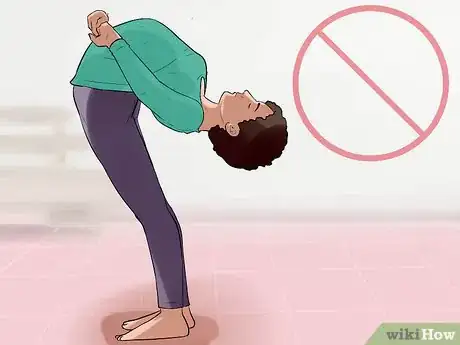
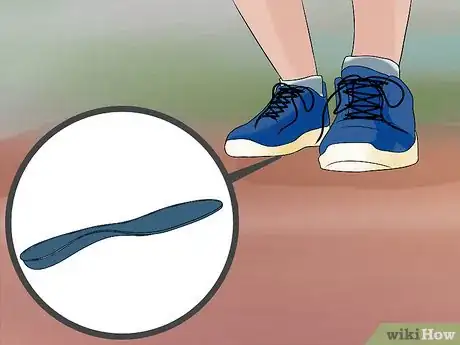

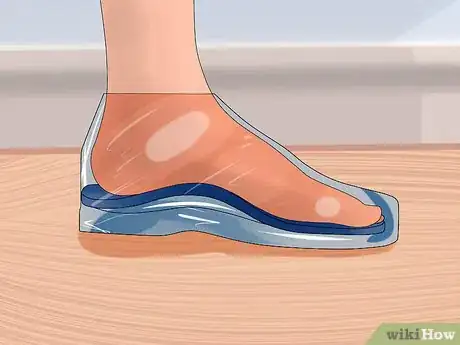
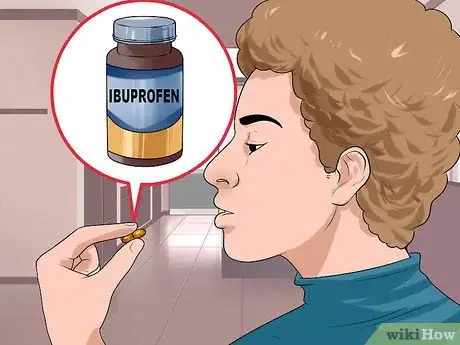

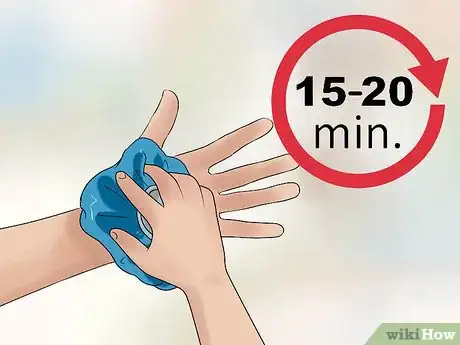






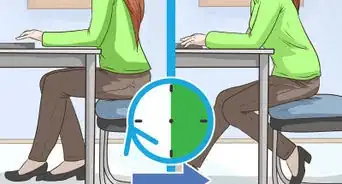

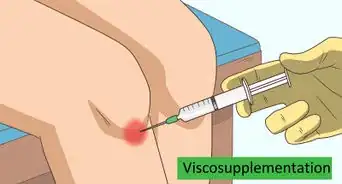
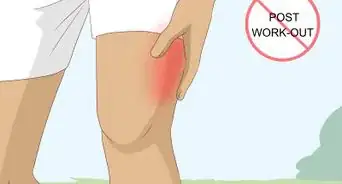

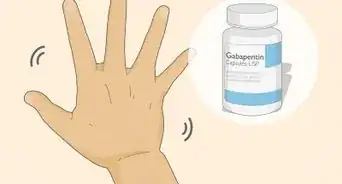
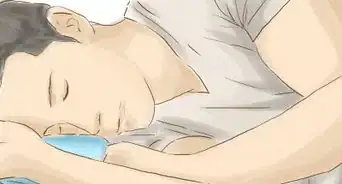

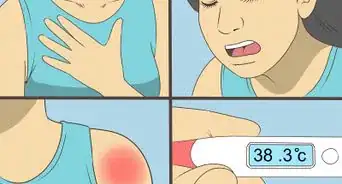


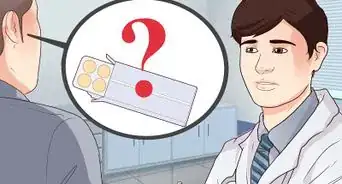
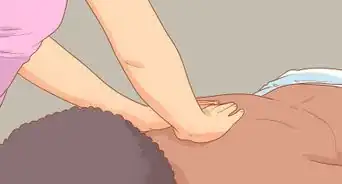









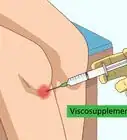
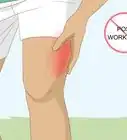



































Medical Disclaimer
The content of this article is not intended to be a substitute for professional medical advice, examination, diagnosis, or treatment. You should always contact your doctor or other qualified healthcare professional before starting, changing, or stopping any kind of health treatment.
Read More...